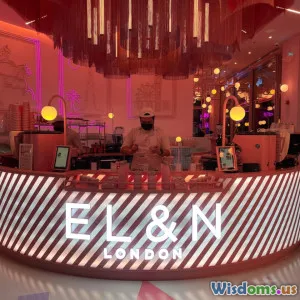
Visual Storytelling Techniques
8 min read Discover essential visual storytelling techniques in graphic design that captivate and communicate effectively. (0 Reviews)
Visual Storytelling Techniques: Elevating Graphic Design & Creativity
Visual storytelling is the art of conveying messages, emotions, and narratives through images and design elements rather than words alone. In today's saturated digital environment, where attention spans are short and competition for eyeballs is fierce, graphic designers must harness powerful visual storytelling techniques to break through the noise. This article unpacks essential methods to tell captivating stories visually, enriching your creative toolkit and elevating your designs.
Introduction: Why Visual Storytelling Matters
Imagine scrolling through your social media feed; countless posts compete for your attention. Amid this, a compelling image or graphic can immediately spark curiosity, evoke emotions, or inspire action. That’s the magic of visual storytelling – it transcends language barriers, quickly communicates complex ideas, and forms emotional bonds.
As graphic designer and storytelling expert Nancy Duarte aptly puts it, “Visual storytelling builds a connection in seconds and opens the door to deeper understanding.” Whether you’re designing branding, UI/UX interfaces, advertisements, or editorial graphics, mastering visual storytelling is key to engaging your target audience and conveying your message memorably.
1. The Foundation: Understanding Your Audience and Narrative
Know Your Audience
Every great story begins with an understanding of who the audience is. Designing a visual story without knowing your viewers is like speaking a language they don’t understand.
- Example: Spotify’s annual Wrapped campaign beautifully segments data—my music habits—transforming complex statistics into vibrant, shareable visuals that resonate with millennials and Gen Z.
Clarify Your Narrative
A strong narrative arc provides direction. Whether it’s a journey, transformation, or problem-solution format, defining your core message guides your visual elements cohesively.
- Quote: "A good story happens when you reduce complexity into a clear and emotionally compelling narrative." — Garr Reynolds, Presentation Zen
2. Techniques of Visual Storytelling
a. Composition and Layout
The arrangement of visual elements directs viewer focus and creates rhythm.
- Rule of Thirds: Placing focal points along intersecting lines to create balance and interest.
- Leading Lines: Guide viewers’ eyes through the design seamlessly. Example: Apple's product pages employ clean layouts and leading lines that emphasize product features while retaining simplicity.
b. Color Psychology
Colors convey emotions and influence perception. Choosing the right palette strengthens your story’s tone.
- Warm colors (reds, oranges) evoke energy and urgency.
- Cool colors (blues, greens) suggest calm and trust. Case Study: The WWF logo uses a minimalist black and white panda silhouette, symbolizing conservation seriousness and global unity.
c. Iconography and Symbolism
Icons and symbols condense complex ideas into instantly recognizable graphics.
- For instance, a broken chain symbolizing freedom or escape.
- Tip: Ensure symbols are culturally appropriate and easily interpretable.
d. Typography as a Narrative Tool
Typography goes beyond text; it’s a voice.
- Combining typefaces creates contrast and hierarchy.
- Script fonts may communicate elegance; bold sans-serif fonts convey strength. Example: Netflix uses bold typography in promotional graphics to create urgency and excitement.
e. Layering and Depth
Adding layers, shadows, and textures creates depth, invoking a more immersive and tangible experience.
- Ref: Adobe’s use of material design emphasizes depth through shadows to simulate real-world interactions.
f. Storyboarding and Sequential Imagery
Plotting visuals sequentially tells a progression tale.
- Used extensively in advertising and info-graphics, storyboards build context and anticipation. Real-World Insight: Behind famous campaigns like Nike's "Just Do It," storyboarding was key to shaping inspirational narratives that visually motivate.
3. How Technology Enhances Visual Storytelling
With the rise of digital tools and platforms, graphic designers have more creative freedom than ever.
Interactive Storytelling
Tools like Adobe XD and Figma let designers prototype interactive narratives.
- Interaction through animations and micro-interactions deepens engagement.
- Example: National Geographic’s interactive web articles use scroll-triggered visuals to immerse readers in journeys from the Amazon rainforest to the Sahara desert.
Augmented Reality (AR) and Virtual Reality (VR)
These technologies enable immersive storytelling experiences that captivate and educate.
- AR apps allow consumers to visualize furniture in their home settings.
- Brands like IKEA transform catalog browsing into interactive AR experiences—a revolution in retail storytelling.
Data Visualization
Infographics transform raw data into understandable stories.
- A Harvard Business Review study found that data visualizations help readers understand information 40% faster and remember it better.
4. Best Practices and Pitfalls to Avoid
Best Practices
- Consistency: Maintain visual language coherence across branding or campaign materials.
- Simplicity: Avoid clutter; the best stories are often elegantly simple.
- Emotion: Use visuals that emotionally connect—human faces often increase empathy.
- Testing: Gather feedback to ensure clarity and impact.
Common Pitfalls
- Overloading with text or competing visuals, diluting the message.
- Ignoring cultural differences, leading to misinterpretations.
- Relying too heavily on trends instead of timeless storytelling principles.
Conclusion: Unleash the Power of Your Visual Story
Mastering visual storytelling is more than an artistic exercise; it’s a strategic necessity in graphic design. By understanding your audience, crafting clear narratives, and applying techniques such as thoughtful composition, evocative color choices, meaningful symbols, and modern technology, you can create designs that don’t just look good but also speak and connect.
As designer and author David Sibbet notes, "Visual storytelling is the oldest, most indulgent form of communication—because it involves imagination and humans' longing to be connected." Step into your role as a visual storyteller, wield your creativity intentionally, and watch your designs reach hearts and minds alike.
Ready to transform your graphic designs into memorable stories? Start experimenting with these techniques today and craft narratives that truly move your audience.
Rate the Post
User Reviews
Popular Posts




















